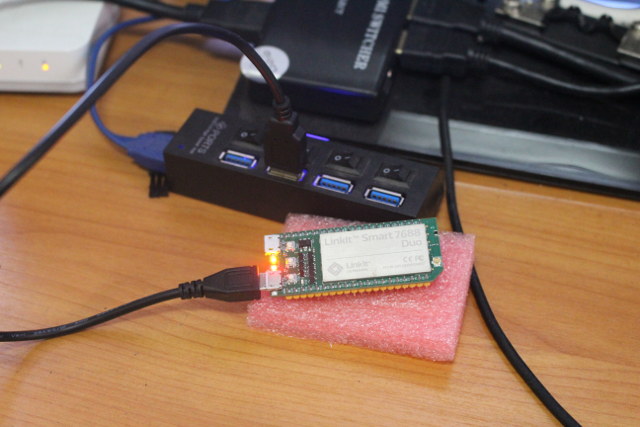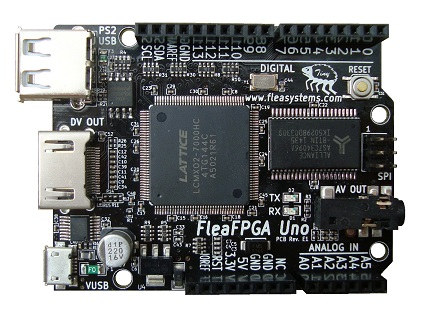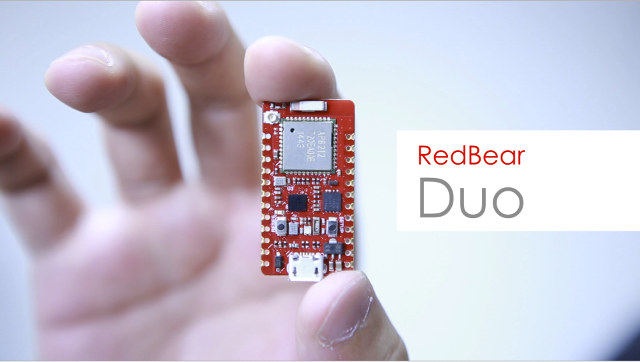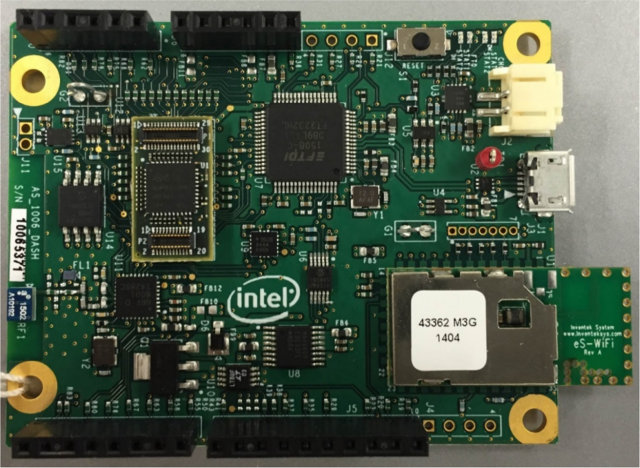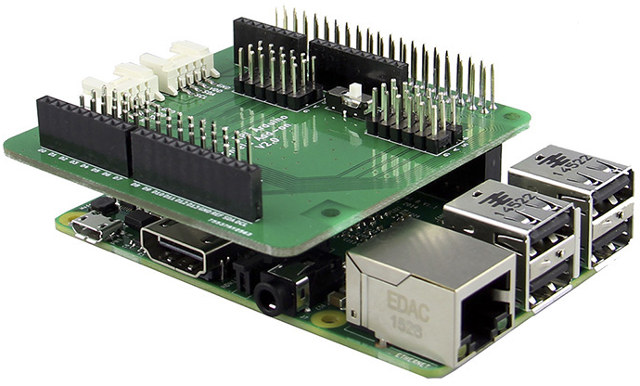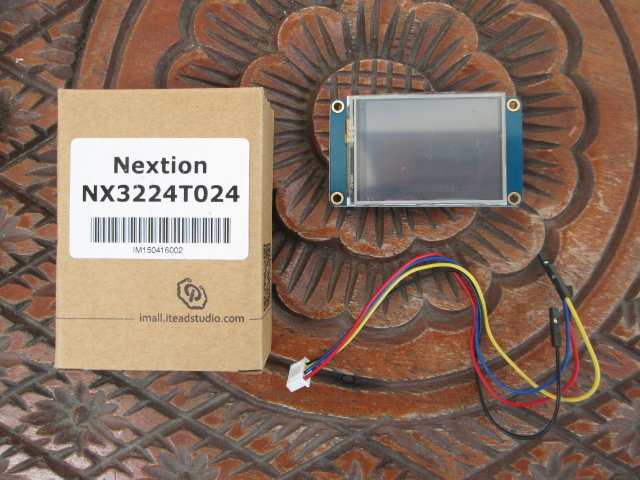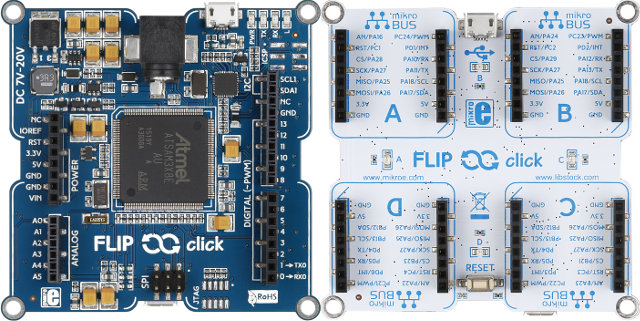Mediatek Labs has announced LinkIt Smart 7688 development boards powered by Mediatek MT7688 WiSoC earlier today, but I was selected for a close beta several weeks before the launch, and I’ve had time to play a little with the boards, so today I’ll report my experience getting started with LinkIt Smart 7688 amd 7688 Duo by writing a Quick Start Guide showing how to setup the boards, upgrade firmware, access the serial console, run “Blink LED” sample applications with Python and JavaScript, as well as the Arduino IDE, and connect to the Internet. Initial Setup You’ll only need a micro USB cable and a computer with WiFi and USB ports to get started with the board. The green LED (top) for the MCU will turn on immediately, while the red LED (bottom) for WiFI will blink once, and only turn on continuously after 5 seconds, and within 30 seconds after […]
Mediatek LinkIt Smart 7688 and Smart 7688 DUO Boards Run OpenWRT for IoT Applications
MediaTek LinkIt is a collection of development platforms designed for the prototyping of wearables and Internet of Things (IoT) devices, and last year they started with LinkIt ONE board based on Mediatek MT2501 “Aster” micro-controller and featuring WiFi, Bluetooth, GPSD and GSM/GPRS connectivity. Mediatek Labs has now launched two new LinkIt board, namely LinkIt Smart 7688 and LinkIt Smart 7688 DUO, both powered by Mediatek MT7688 MIPS processor and running OpenWRT, with the latter also adding an Atmel ATmega32U4 for Arduino compatibility. LinkIt Smart 7688 Board LinkIt Smart 7688 is then the simpler of the two with the following specifications: Processor – Mediatek MT7688AN MIPS24KEc processor @ 580 MHz with WiFi System Memory – 128MB DDR2 RAM. Storage – 32MB flash + micro SD slot Connectivity – 1T1R Wi-Fi 802.11 b/g/n with chip antenna and I-PEX conector USB – 1x micro USB host port, 1x micro USB port for power […]
FleaFPGA Uno Board Combines a Lattice FPGA, Arduino UNO Form Factor, HDMI Output, and an ESP8266 WiFi Module
FPGA board with Arduino headers are not exactly a rarity, for example Digilent ARTY in a larger form factor, and some developers have designed FPGA boards using Arduino Mega form factor, such as Papilio DUO and Arduissimo. But FleaFPGA Uno is the first Arduino Uno like FPGA board I’ve seen and it includes HDMI output, one USB host port, as well as an optional WiFi module based on ESP8266. FleaFPGA Uno specifications: FPGA – Lattice Semi MachXO2-7000HC with 6864 LUTs, 256 Kbits flash, and 240+54 Kbits SRAM System memory – 512KB 10nsec User SRAM. Storage – 16MB User Flash ROM. Video Output 24-bit Digital Video out via HDMI port up to 800×600 Composite NTSC video via 3.5 mm jack Audio – Stereo audio out via 3.5mm jack. USB 1x micro USB port for power and slave serial port 1x USB 1.1 host port (PS/2 port) On-board USB JTAG for easy […]
RedBear Duo is a Breadboard-friendly Wi-Fi + BLE IoT Board Based on Ampak AP6212 Module (Crowdfunding)
I’ve taken apart lots of TV boxes and together with Realtek, Ampak are by far the most popular wireless modules to provide WiFi and Bluetooth connectivity in those devices. One startup decided to use Ampak AP6212 module, also found in NanoPi 2 board, to create a breadboard-friendly IoT board with Bluetooth 4.0 and 802.11b/g/n connectivity. Redboard Duo has been designed with the same form factor as many other IoT boards such as NodeMCU or Spark Photon, and features the following: Ampak AP6212 module: STMicroelectronics STM32F205 ARM Cortex-M3 @120MHz, 128 KB SRAM and 1MB Flash Broadcom BCM43438 Wi-Fi 802.11n (2.4GHz only) + Bluetooth 4.1 (Dual Mode) combo chip Storage – On-board 16 Mbit (2 MB) SPI Flash Integrated chip antenna with the option to connect external antenna Expansion – Headers with 18 I/O pins Misc – RGB status LED Dimensions – 20.5mm x 39mm The company also made a small baseboard called RBLink with […]
Intel Quark D1000 Customer Reference Board and Intel System Studio for Microcontrollers
Intel unveiled Intel Quark D1000, D2000 and SE micro-controllers last week, with Intel Quark D1000 available now for $2.5 to $4 depending in quantities, and to my knowledge the first Intel MCU that can be considered ultra low power. I could not see a development board at the time, but Intel does have an Intel Quark D1000 Customer Reference Board with a familiar Arduino form factor. Intel Quark D1000 board specifications: MCU – Intel Quark D1000 32-bit CISC micro-controller @ 32 MHz Storage – 4MB SPI flash (Microchip ) Connectivity – Bluetooth LE radio, Wi-Fi (Inventek Systems Serial to Wifi module) Sensor – 3-axis accelerometer Expansion – Arduino compatible headers with GPIOs, I2C, SPI, UART, analog inputs, and 5V, 3.3V and GND. Debugging – mini USB port for programming and debugging; JTAG pins Power – 5V via mini USB port, or LiPo / Li-ion battery Dimensions – N/A Information about […]
$5 Add-on Board for Raspberry Pi Supports Arduino Shields and Grove Modules (with Caveats)
If you have several Arduino shields, you can use them on your Raspberry Pi B+/ Pi 2 board with Cooking Hacks’ Raspberry Pi to Arduino shields connection bridge supported by arduPi library to control I2C, SPI, GPIO, analog inputs, etc.., and sells for $65 on Amazon. Seeed Studio Grove modules have also become more popular, with several new boards integrating 4-pin Grove connectors such as Beaglebone Green. Raspberry Pi boards also support Grove modules, up to 15 of these!, using Grove Pi+ add-on board which the company sells for around $30. But I’ve just discovered a Raspberry Pi to Arduino Expansion Board V2.0 on DealExtreme, selling for $7.97 that’s allows the latest Raspberry Pi boards with a 40-pin headers to take both Arduino shields and 2 Grove modules. After some investigations, I found out it was made by ITead Studio, where they sell it for $5 + shipping. The Wiki […]
How to Use Nextion Serial Touchscreen Displays – Part 1: Standalone Mode
Itead Studio launched an Indiegogo campaign earlier this year for their Nextion TFT displays that can be connected to external board such as Arduino or Raspberry Pi via the serial interface, or even a standard computer provided you have a USB to TTL debug board. The campaign was successful with over 1,700 backers, and the company recently sent me two samples for review: a 2.4″ display and a 5″ display. In this post, I’ll look at the boards, and make a small standalone demo with Nextion Editor in Windows. Nextion NX3224T024 2.4″ Display The first item is a 2.4″ TFT display called NX3224T024_011N (non-touch) or NX3224T024_011R (Resistive touch) with 65536 color, 320×240 pixel resolution, LED backlight and up to 200nit brightness. It ships with a cable for the serial connection (5V, Tx, Rx, and GND). The back of the display features the serial connector, a micro SD used to load the […]
Flip & Click Board with Atmel SAM3X8E MCU Features 4 mikroBUS Sockets & Arduino Headers
HummingBoard Gate introduced last month was the first board I saw with a mikroBUS socket that can be used with over 150 “Click boards” by MikroElektronika adding functionalities such as sensors, OLED displays, relays, servos, and so on. But if you project don’t quite need the power of a full featured Linux board, or you simply prefer working with the Arduino IDE, MikroElektronika has just launched Flip & Click board powered by an Atmel SAM3X8E Cortex-M3 micro-controller and featuring four mikroBUS sockets on the back of the board, as well as Arduino compatible headers on the top. Flip & Click board specifications: MCU – Atmel AT91SAM3X8E Cortex M3 micro-controller @ 84MHz with 512 KB flash, 100 KB SRAM (64+32+4), also used in Arduino Due. Expansions Headers Arduino UNO compatible headers on the top 4x mikroBUS socket on the bottom USB – micro USB port for programming and power Misc – […]


